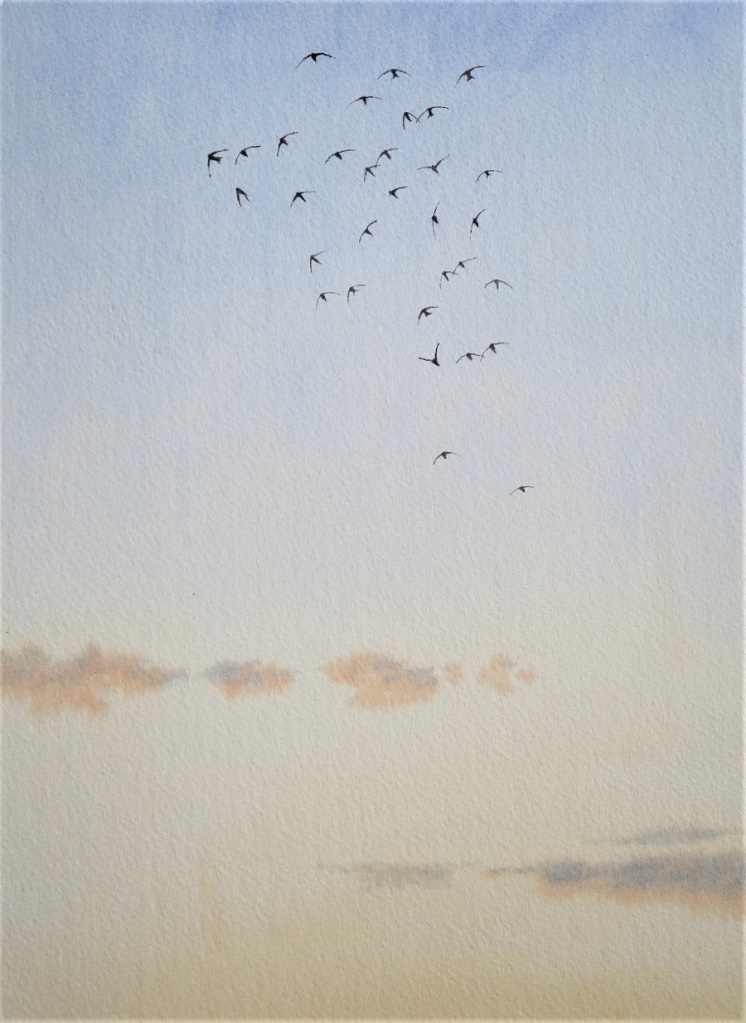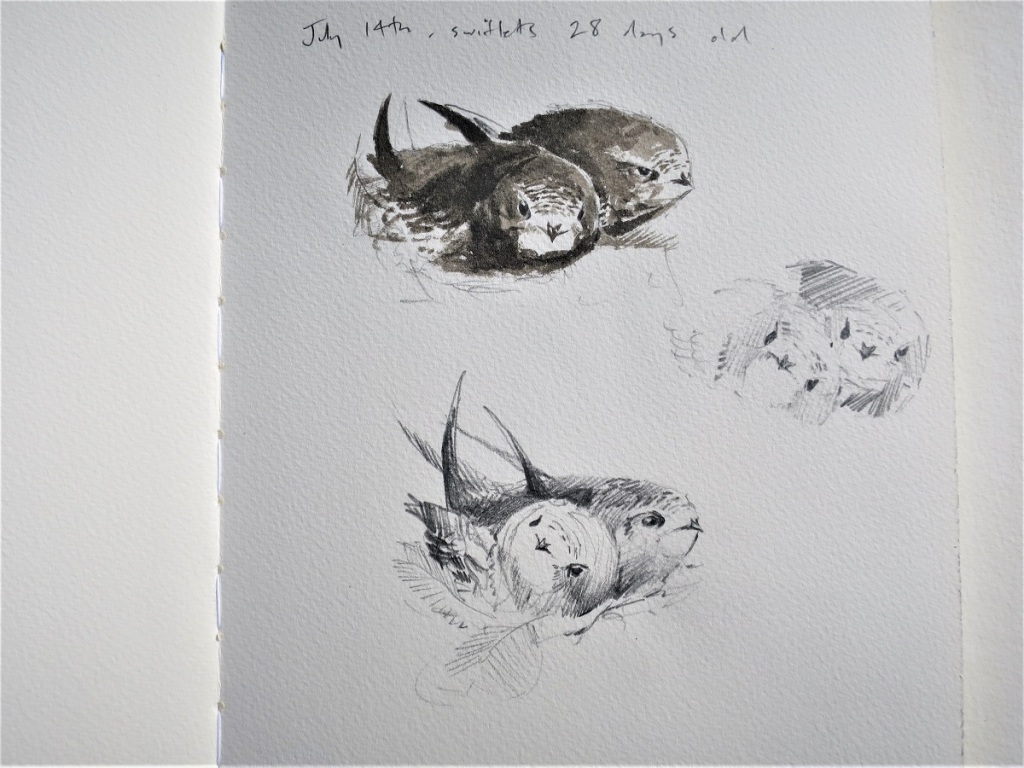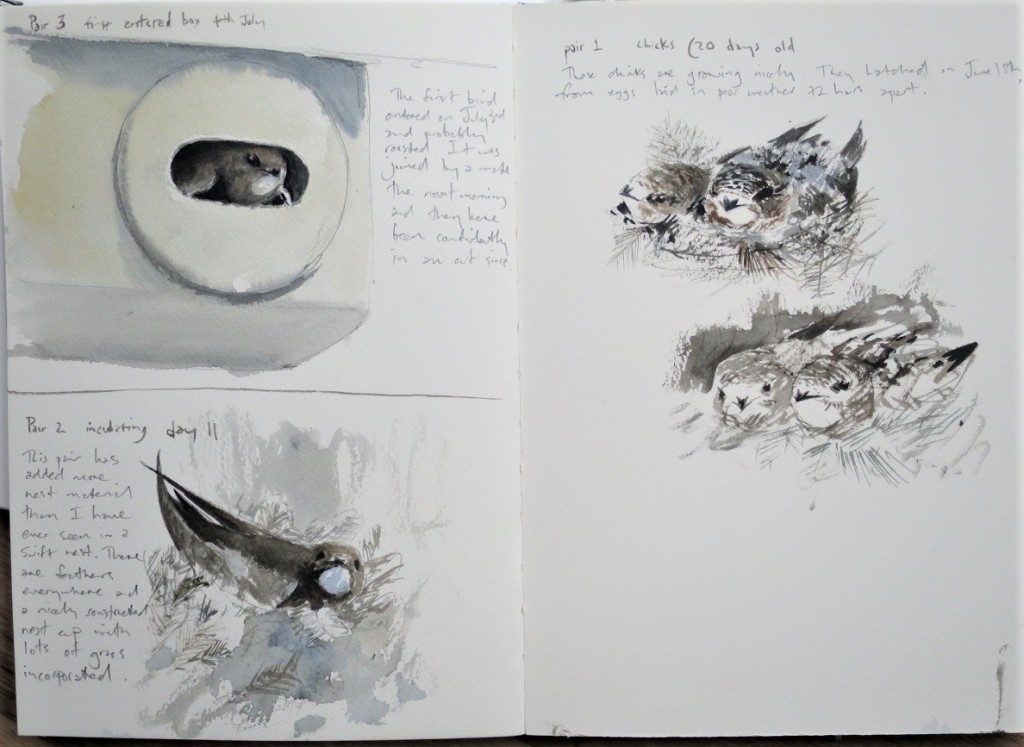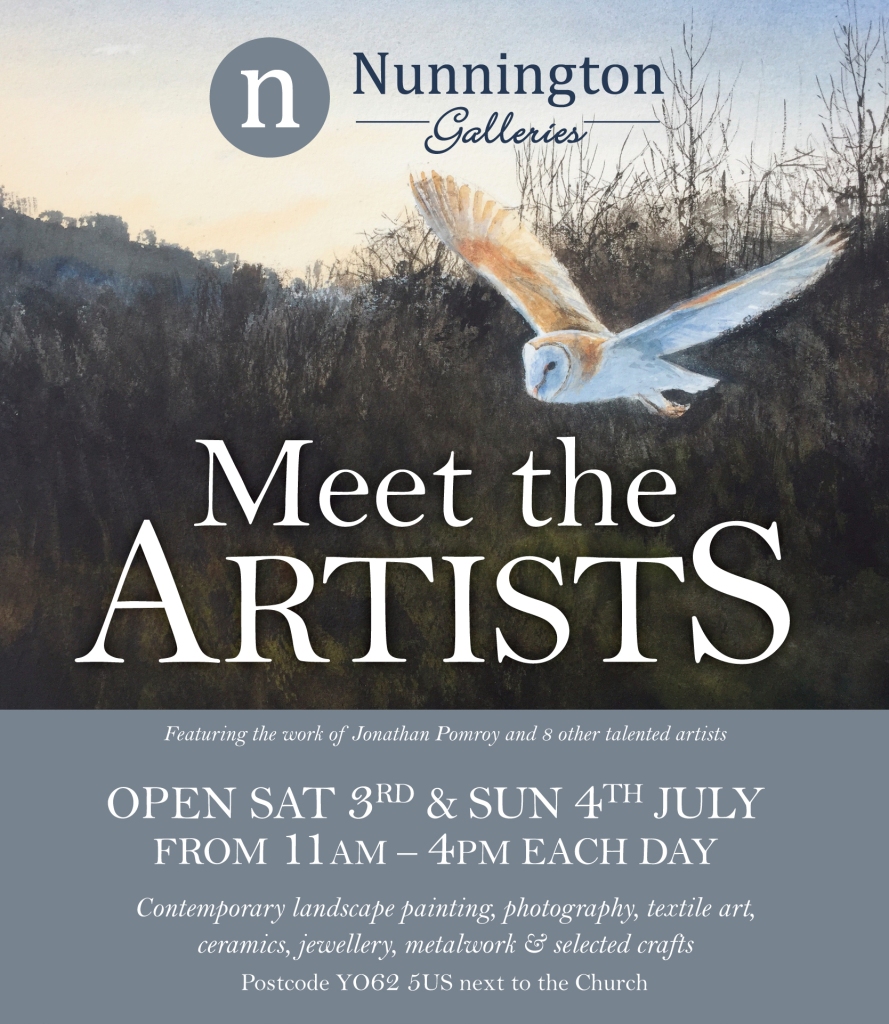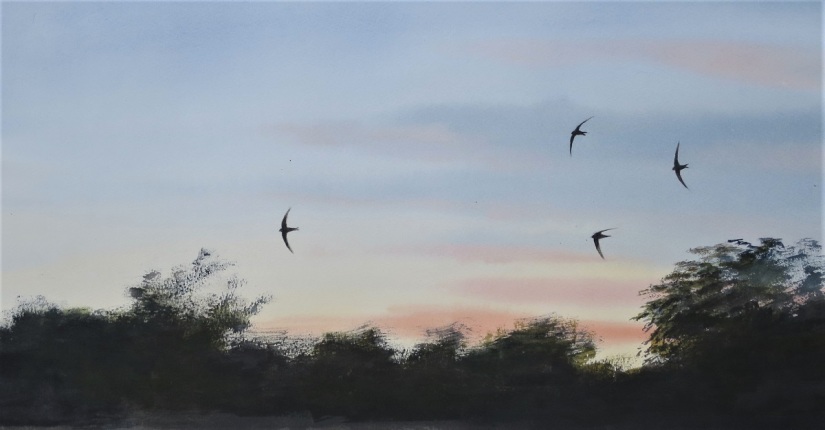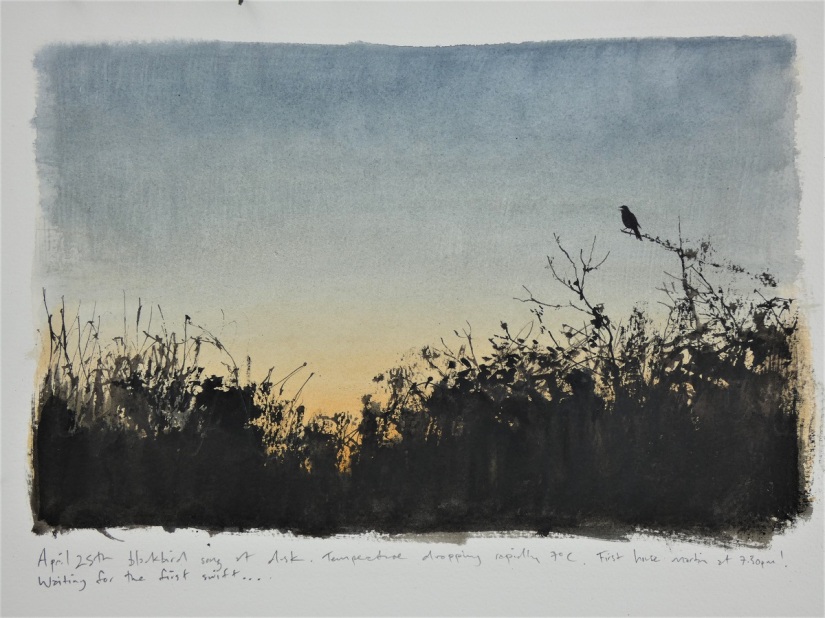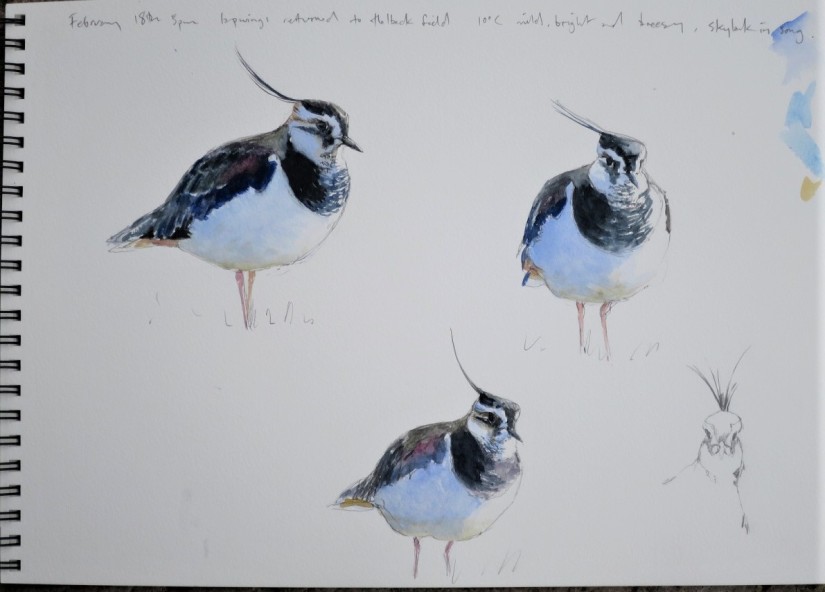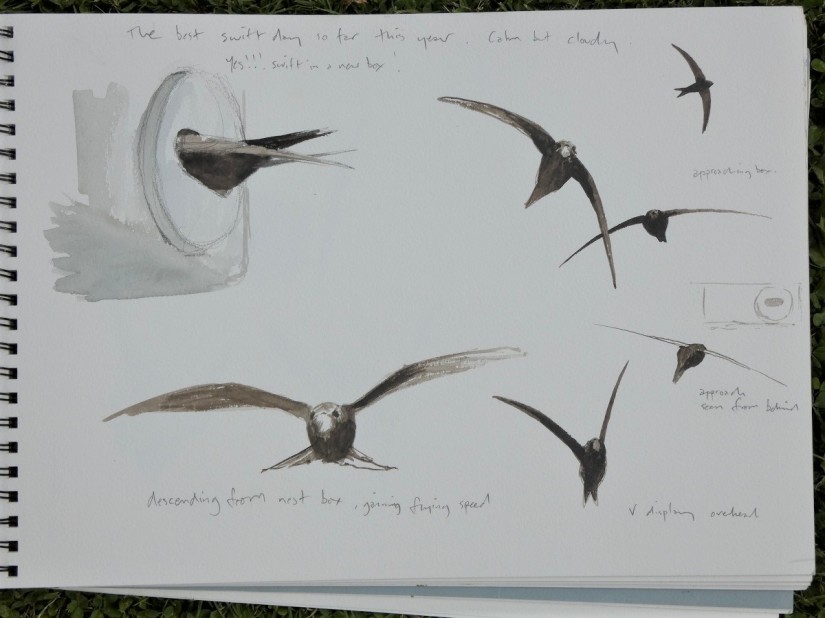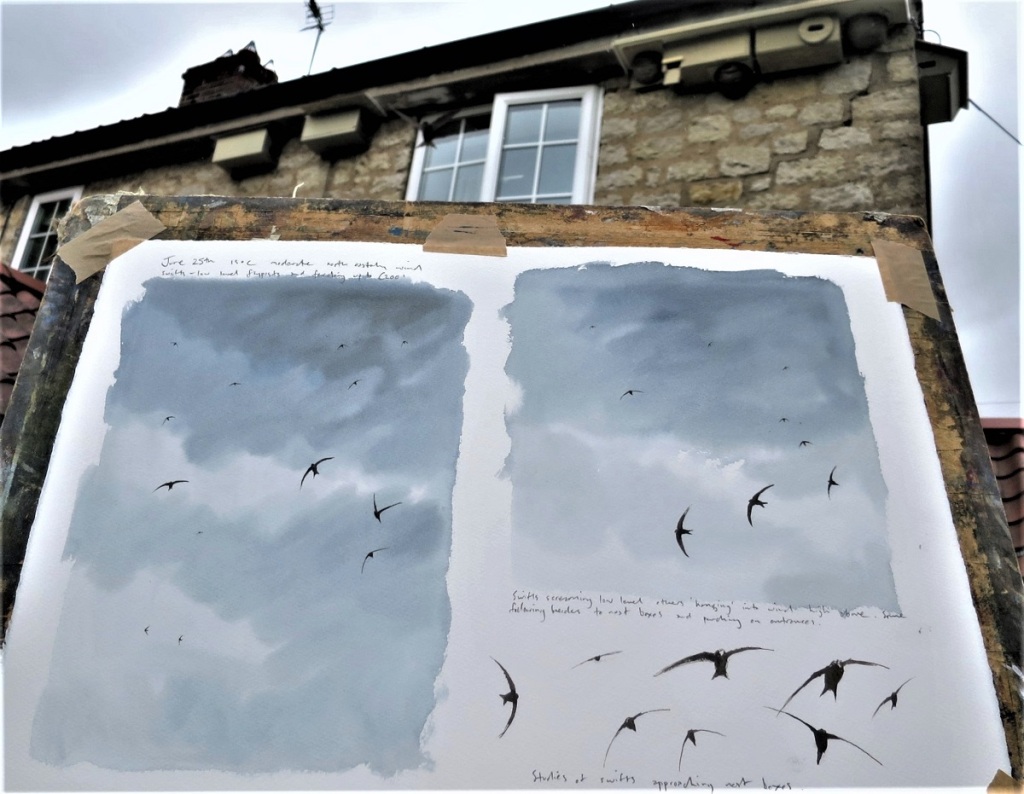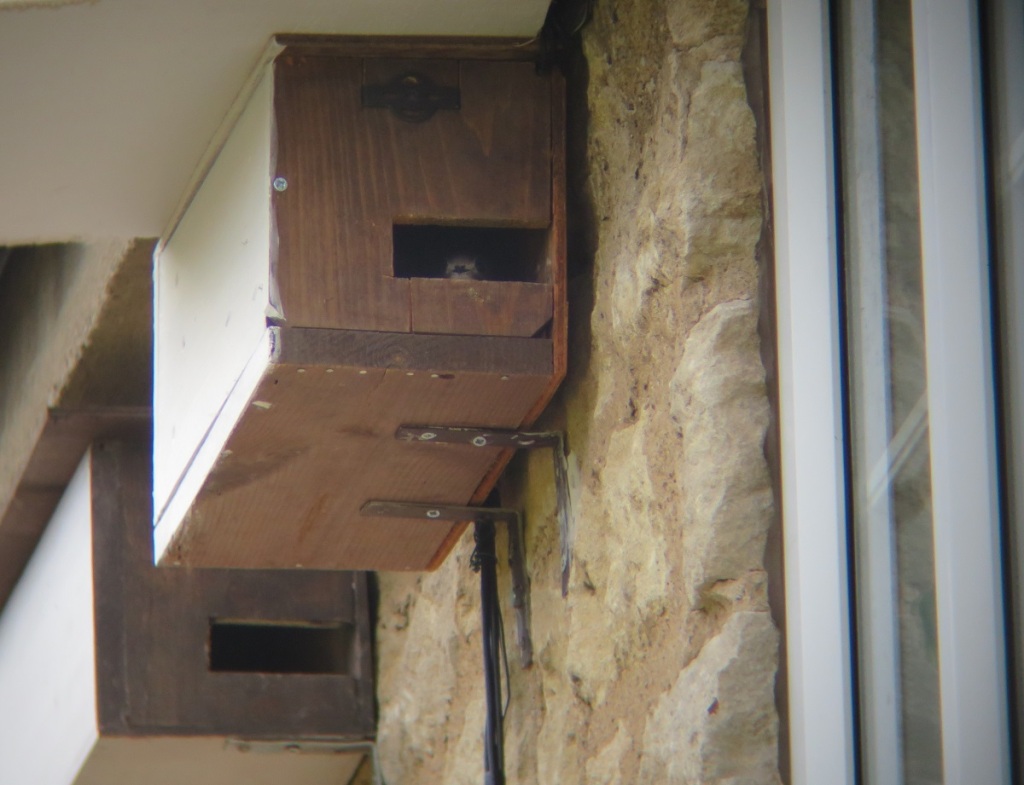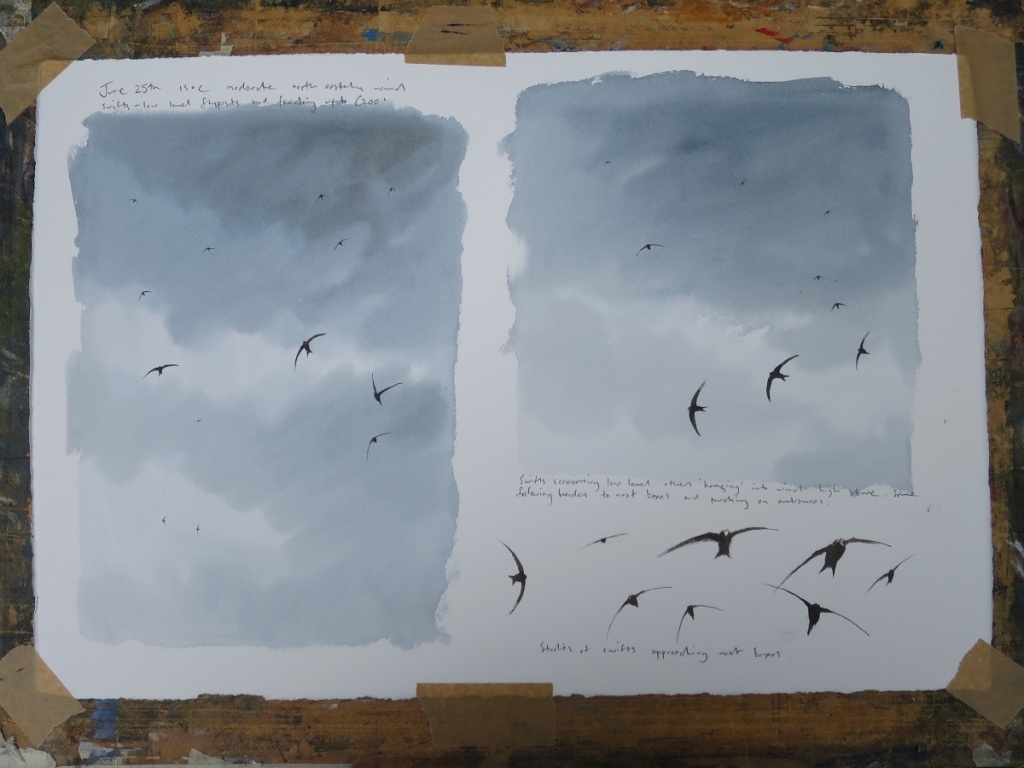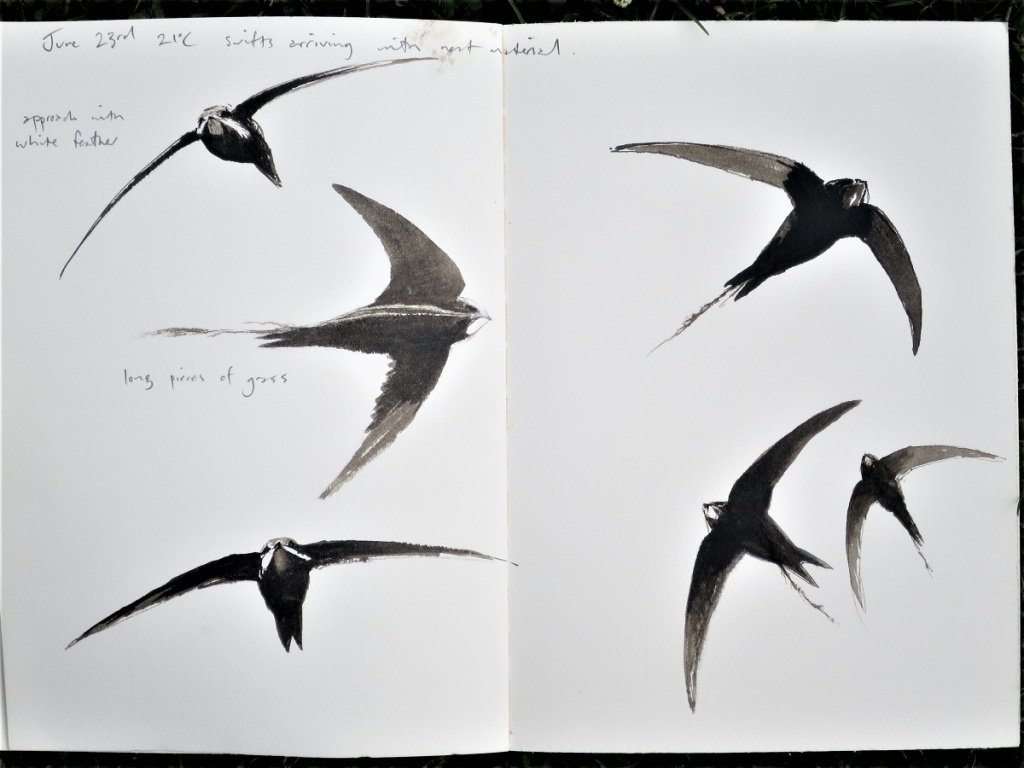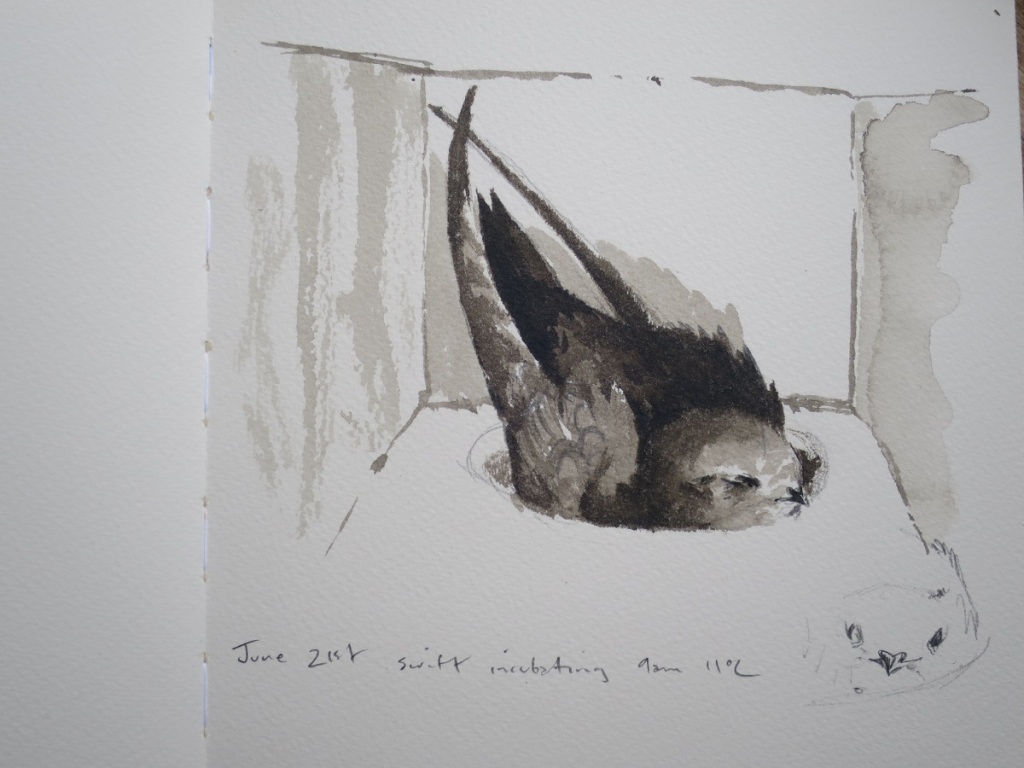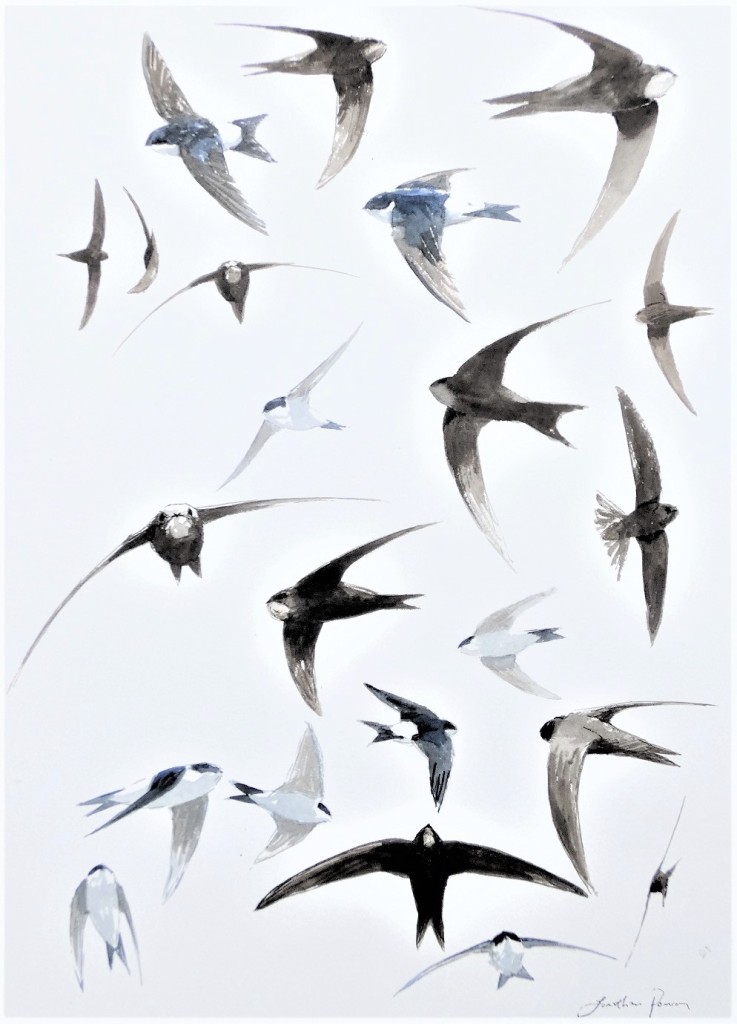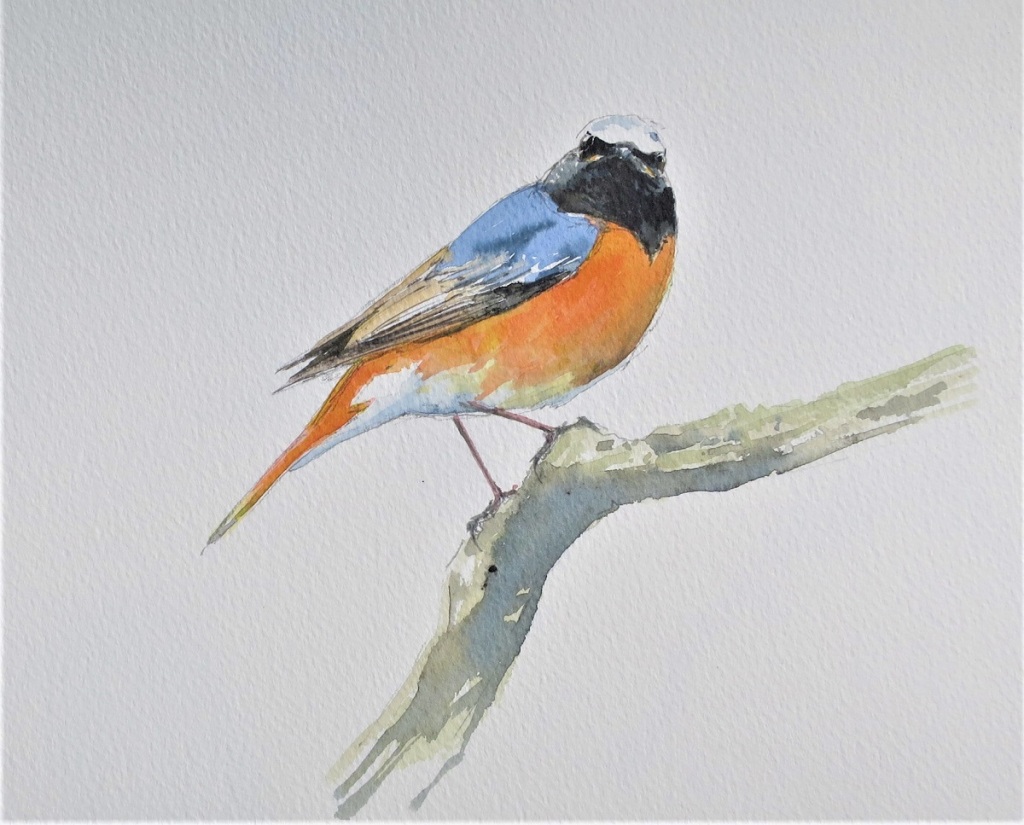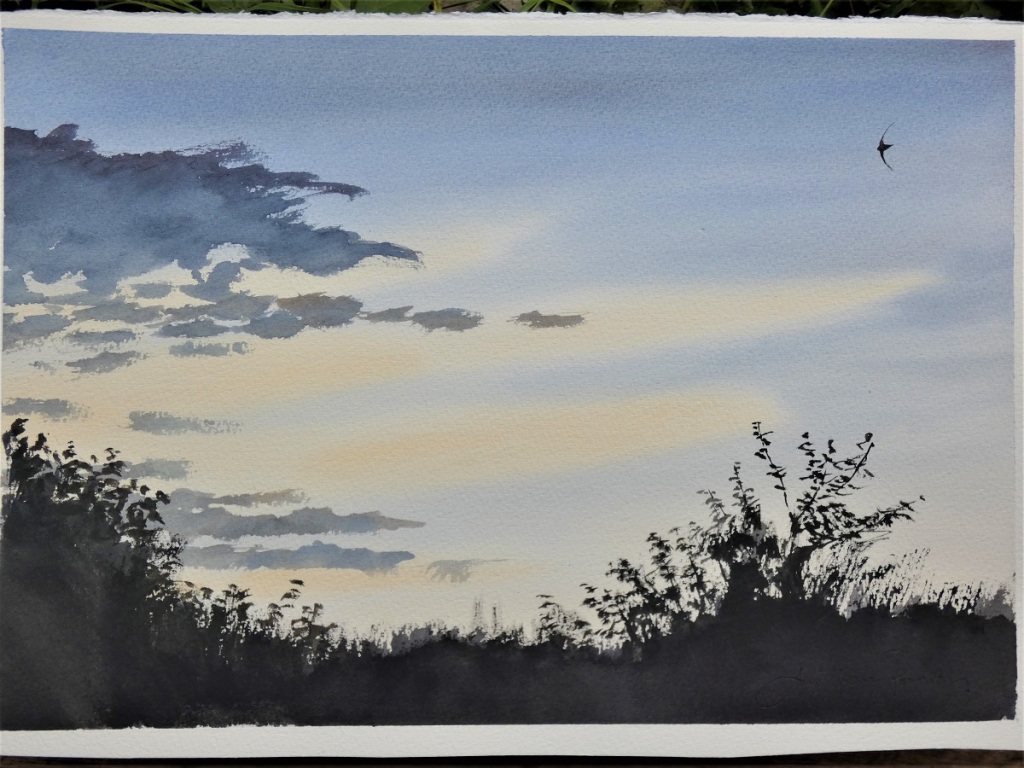The swift season is showing real signs of winding down here in Gilling East. This is a few days earlier than usual, but the summer has been so good for them and I think that all ages have probably achieved all they need to until next year. Any birds old enough to enter nest spaces have probably done so, younger birds have had ample good weather to build up a memory map of feeding and nest sites and have perhaps joined a colony in anticipation of next year.
Prospecting activity ceased well over a week ago now though we have been treated to some wonderful fast passes and some big high level calling packs of 30-40 swifts on occasion- exceptionally good numbers for Gilling. This number has almost halved in recent days.
We have had quite an influx of house martins though it remains to be seen how many second broods we will see. Two lots of fledglings still clamour into the nests at night with some taking over empty artificial nest cups too. I often wonder how the adults even contemplate a second brood with the young crowding into the nest.
Recently fledged house martins pile in at roost time and often end up entering swift boxes by mistake. Usually they encounter wild screaming from the rightful occupants and leave rapidly but last Thursday evening a house martin found itself cornered after entering an occupied swift box. The box has two 17 day old chicks. I think the house martin was lucky to get away with its life on initial entry as it was attacked; I fully expected it to be killed by the adult swifts, but the situation settled down after the initial hostility. The house martin roosted right in the nest cup with the two chicks and was often preened by the adult swifts. It had countless opportunities to leave unhindered. The swifts had plenty of opportunity to attack or usurp it after first light as it lingered until it heard our other house martins. At 6.53 am it casually wandered to the entrance and flew off unharmed.
What I find interesting is the wider relationship between house martins and swifts. I’ve had both species on three different houses now and the interaction between these birds is fascinating. I think this sort of behaviour probably happens more than we realised but could be nothing more than inexperience leading to misjudgement and timing. A few seconds later and the house martin would not have been cornered in the box and would have roosted elsewhere. In other similar situations young martins may have been killed by swifts? Perhaps the most interesting question here is whether another species (for example a young house sparrow) would have been tolerated to the same extent?
At times the airspace above our house is alive with house martins; adults and fledglings mingling with our swifts. After a very late start with poor numbers the population in Gilling East is looking much better, if still well below last year. As we are already seeing the departure of most swifts I look forward to enjoying the rest of the summer in the company of house martins. We will also have swifts until around 20th August as our later pair continue to feed their chicks.





